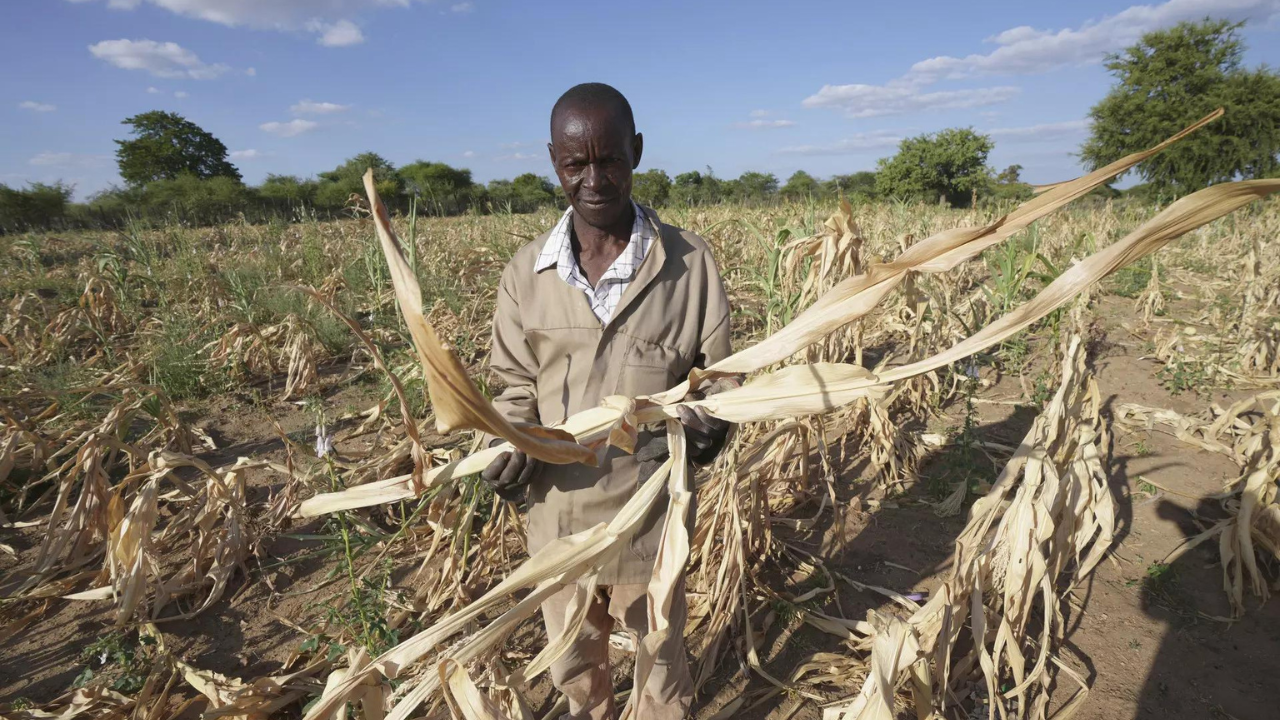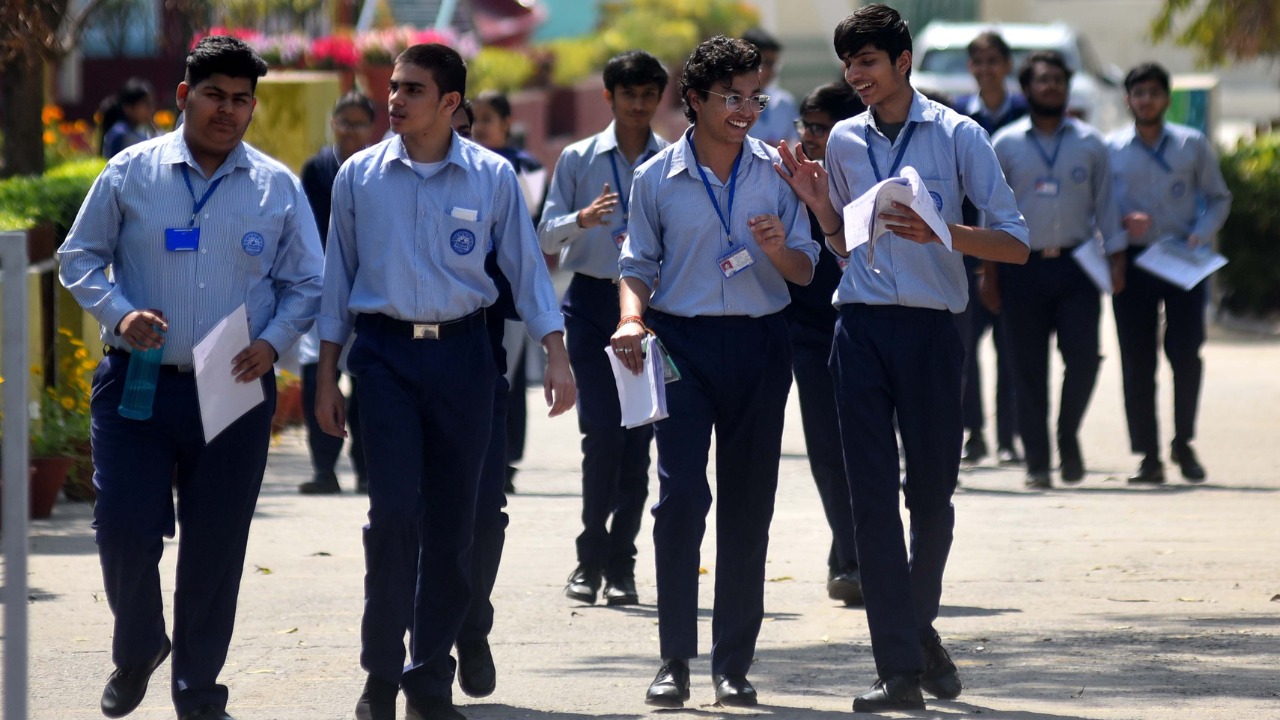HARARE: From historic fertilizer strategies in Zimbabwe to new greenhouse expertise In Somalia, farmers throughout the closely agriculture-reliant African continent wish to the previous and future to answer local weather change.
Africa, with the world's youngest inhabitants, faces the worst results of a warming planet whereas contributing the least to the issue. Farmers are scrambling to verify the booming inhabitants is fed.
With over 60% of the world's uncultivated land, Africa ought to have the ability to feed itself, some specialists say. And but three in 4 folks throughout the continent can not afford a nutritious diet, based on a report final yr by the African Union and United Nations companies. Causes embody battle and lack of funding.
In Zimbabwe, the place the El Nino phenomenon has worsened a drought, small-scale farmer James Tshuma has misplaced hope of harvesting something from his fields. It's a well-recognized story in a lot of the nation, the place the federal government has declared a $2 billion state of emergency and tens of millions of individuals face starvation.
However a patch of inexperienced greens is flourishing in a small backyard the 65-year-old Tshuma is maintaining alive with do-it-yourself natural manure and fertilizer. Beforehand discarded gadgets have once more change into priceless.
“That is how our fathers and forefathers used to feed the earth and themselves earlier than the introduction of chemical substances and inorganic fertilizers,” Tshuma stated.
He applies livestock droppings, grass, plant residue, stays of small animals, tree leaves and bark, meals scraps and different biodegradable gadgets like paper. Even the bones of animals which are dying in growing numbers because of the drought are burned earlier than being crushed into ash for his or her calcium.
Local weather change is compounding a lot of sub-Saharan Africa's longstanding downside of poor soil fertility, stated Marvel Ngezimana, an affiliate professor of crop science at Zimbabwe's Marondera College of Agricultural Sciences and Expertise.
“The mixture is forcing folks to re-look at how issues had been carried out prior to now like nutrient recycling, but in addition mixing these with trendy strategies,” stated Ngezimana, whose establishment is researching the mix of conventional practices with new applied sciences.
Aside from being wealthy in nitrogen, natural fertilizers assist improve the soil's carbon and talent to retain moisture, Ngezimana stated. “Even when a farmer places artificial fertilizer into the soil, they’re prone to undergo the results of poor moisture so long as there’s a drought,” he stated.
Different strikes to conventional practices are underneath means. Drought-resistant millets, sorghum and legumes, staples till the early twentieth century once they had been overtaken by unique white corn, have been taking over extra land area in recent times.
Leaves of drought-resistant vegetation that had been as soon as a daily dish earlier than being solid off as weeds are returning to dinner tables. They even seem on elite grocery store cabinets and are served at stylish eating places, as are millet and sorghum.
This might create markets for the crops even past drought years, Ngezimana stated.
A greenhouse revolution in Somalia
In conflict-prone Somalia in East Africa, greenhouses are altering the best way some folks dwell, with buyers filling up carts with domestically produced greens and historically nomadic pastoralists underneath strain to cool down and develop crops.
“They’re natural, contemporary and wholesome,” shopper Sucdi Hassan stated within the capital, Mogadishu. “Figuring out that they arrive from our native farms makes us really feel safe.”
Her new procuring expertise is an indication of relative calm after three a long time of battle and the local weather shocks of drought and flooding.
City prospects are actually assured of year-round provides, with greater than 250 greenhouses dotted throughout Mogadishu and its outskirts producing fruit and greens. It’s a enormous leap.
“Previously, even primary greens like cucumbers and tomatoes had been imported, inflicting logistical issues and added bills,” stated Somalia's minister of youth and sports activities, Mohamed Barre.
The greenhouses additionally create employment in a rustic the place about 75% of the inhabitants is folks underneath 30 years outdated, a lot of them unemployed.
About 15 kilometers (9 miles) from the capital, Mohamed Mahdi, an agriculture graduate, inspected produce in a greenhouse the place he works.
“Given the excessive unemployment price, we’re grateful for the prospect to work in our chosen area of experience,” the 25-year-old stated.
In the meantime, some pastoralist herders are being compelled to vary their conventional methods after watching livestock die by the 1000’s.
“Transitioning to greenhouse farming offers pastoralists with a extra resilient and sustainable livelihood possibility,” stated Mohamed Okash, director of the Institute of Local weather and Atmosphere at SIMAD College in Mogadishu.
He known as for bigger investments in good farming to fight meals insecurity.
A extra resilient bean in Kenya
In Kenya, a brand new climate-smart bean selection is bringing hope to farmers in a area that had recorded lowered rainfall in six consecutive wet seasons.
The variability, known as “Nyota” or “star” in Swahili, is the results of a collaboration between scientists from the Kenya Agricultural and Livestock Analysis Group, the Alliance of Bioversity Worldwide and analysis group Worldwide Heart for Tropical Agriculture.
The brand new bean selection is tailor-made for Kenya's various weather conditions. One focus is to verify drought doesn't kill them off earlier than they’ve time to flourish.
The bean selection flowers and matures so shortly that it’s prepared for harvesting by the point the rains disappear, stated David Karanja, a bean breeder and nationwide coordinator for grains and legumes at KALRO.
Hopes are that these varieties may bolster nationwide bean manufacturing. The annual manufacturing of 600,000 metric tons falls in need of assembly the annual demand of 755,000 metric tons, Karanja stated.
Farmer Benson Gitonga stated his yield and income are growing due to the brand new bean selection. He harvests between 9 and 12 baggage from an acre of land, up from the earlier 5 to seven baggage.
One aspect good thing about the range is a breath of contemporary air.
“Prospects significantly admire its qualities, because it boasts low flatulence ranges, making it an interesting alternative,” Gitonga stated.
Africa, with the world's youngest inhabitants, faces the worst results of a warming planet whereas contributing the least to the issue. Farmers are scrambling to verify the booming inhabitants is fed.
With over 60% of the world's uncultivated land, Africa ought to have the ability to feed itself, some specialists say. And but three in 4 folks throughout the continent can not afford a nutritious diet, based on a report final yr by the African Union and United Nations companies. Causes embody battle and lack of funding.
In Zimbabwe, the place the El Nino phenomenon has worsened a drought, small-scale farmer James Tshuma has misplaced hope of harvesting something from his fields. It's a well-recognized story in a lot of the nation, the place the federal government has declared a $2 billion state of emergency and tens of millions of individuals face starvation.
However a patch of inexperienced greens is flourishing in a small backyard the 65-year-old Tshuma is maintaining alive with do-it-yourself natural manure and fertilizer. Beforehand discarded gadgets have once more change into priceless.
“That is how our fathers and forefathers used to feed the earth and themselves earlier than the introduction of chemical substances and inorganic fertilizers,” Tshuma stated.
He applies livestock droppings, grass, plant residue, stays of small animals, tree leaves and bark, meals scraps and different biodegradable gadgets like paper. Even the bones of animals which are dying in growing numbers because of the drought are burned earlier than being crushed into ash for his or her calcium.
Local weather change is compounding a lot of sub-Saharan Africa's longstanding downside of poor soil fertility, stated Marvel Ngezimana, an affiliate professor of crop science at Zimbabwe's Marondera College of Agricultural Sciences and Expertise.
“The mixture is forcing folks to re-look at how issues had been carried out prior to now like nutrient recycling, but in addition mixing these with trendy strategies,” stated Ngezimana, whose establishment is researching the mix of conventional practices with new applied sciences.
Aside from being wealthy in nitrogen, natural fertilizers assist improve the soil's carbon and talent to retain moisture, Ngezimana stated. “Even when a farmer places artificial fertilizer into the soil, they’re prone to undergo the results of poor moisture so long as there’s a drought,” he stated.
Different strikes to conventional practices are underneath means. Drought-resistant millets, sorghum and legumes, staples till the early twentieth century once they had been overtaken by unique white corn, have been taking over extra land area in recent times.
Leaves of drought-resistant vegetation that had been as soon as a daily dish earlier than being solid off as weeds are returning to dinner tables. They even seem on elite grocery store cabinets and are served at stylish eating places, as are millet and sorghum.
This might create markets for the crops even past drought years, Ngezimana stated.
A greenhouse revolution in Somalia
In conflict-prone Somalia in East Africa, greenhouses are altering the best way some folks dwell, with buyers filling up carts with domestically produced greens and historically nomadic pastoralists underneath strain to cool down and develop crops.
“They’re natural, contemporary and wholesome,” shopper Sucdi Hassan stated within the capital, Mogadishu. “Figuring out that they arrive from our native farms makes us really feel safe.”
Her new procuring expertise is an indication of relative calm after three a long time of battle and the local weather shocks of drought and flooding.
City prospects are actually assured of year-round provides, with greater than 250 greenhouses dotted throughout Mogadishu and its outskirts producing fruit and greens. It’s a enormous leap.
“Previously, even primary greens like cucumbers and tomatoes had been imported, inflicting logistical issues and added bills,” stated Somalia's minister of youth and sports activities, Mohamed Barre.
The greenhouses additionally create employment in a rustic the place about 75% of the inhabitants is folks underneath 30 years outdated, a lot of them unemployed.
About 15 kilometers (9 miles) from the capital, Mohamed Mahdi, an agriculture graduate, inspected produce in a greenhouse the place he works.
“Given the excessive unemployment price, we’re grateful for the prospect to work in our chosen area of experience,” the 25-year-old stated.
In the meantime, some pastoralist herders are being compelled to vary their conventional methods after watching livestock die by the 1000’s.
“Transitioning to greenhouse farming offers pastoralists with a extra resilient and sustainable livelihood possibility,” stated Mohamed Okash, director of the Institute of Local weather and Atmosphere at SIMAD College in Mogadishu.
He known as for bigger investments in good farming to fight meals insecurity.
A extra resilient bean in Kenya
In Kenya, a brand new climate-smart bean selection is bringing hope to farmers in a area that had recorded lowered rainfall in six consecutive wet seasons.
The variability, known as “Nyota” or “star” in Swahili, is the results of a collaboration between scientists from the Kenya Agricultural and Livestock Analysis Group, the Alliance of Bioversity Worldwide and analysis group Worldwide Heart for Tropical Agriculture.
The brand new bean selection is tailor-made for Kenya's various weather conditions. One focus is to verify drought doesn't kill them off earlier than they’ve time to flourish.
The bean selection flowers and matures so shortly that it’s prepared for harvesting by the point the rains disappear, stated David Karanja, a bean breeder and nationwide coordinator for grains and legumes at KALRO.
Hopes are that these varieties may bolster nationwide bean manufacturing. The annual manufacturing of 600,000 metric tons falls in need of assembly the annual demand of 755,000 metric tons, Karanja stated.
Farmer Benson Gitonga stated his yield and income are growing due to the brand new bean selection. He harvests between 9 and 12 baggage from an acre of land, up from the earlier 5 to seven baggage.
One aspect good thing about the range is a breath of contemporary air.
“Prospects significantly admire its qualities, because it boasts low flatulence ranges, making it an interesting alternative,” Gitonga stated.







